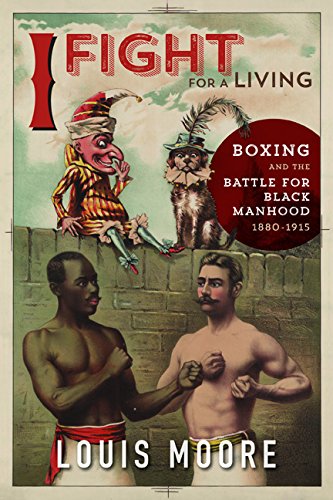[ad_1]
One in all boxing’s most enduring tropes is that of the prizefighter who punches his approach out of poverty and into a lifetime of riches and success. All through the battle sport’s lengthy historical past, numerous pugilists have lived that cliché, to the purpose that these of us who comply with the game as spectators, by advantage of overexposure, threat turning into desensitized to simply how a lot effort it takes—and what number of setbacks must be overcome—by those that achieve such a quest. It bears reminding that, even when realized, the cliché itself is, fairly often, solely half the story.
Louis Moore’s I Struggle for a Dwelling: Boxing and the Battle for Black Manhood is the proper corrective in opposition to that threat, a useful reminder of the intense hardships so many prizefighters have needed to endure. In his meticulously researched e-book, Moore presents a energetic portrait of the boxing panorama on the flip of the 20th century, however greater than that, he efficiently locations black prizefighters of their correct socio-cultural context. To do that, he takes a detailed have a look at the circumstances beneath which essentially the most famed and expert black boxers entered the world of pugilism, and the way they achieved success within the ring, regardless of the intense racism which each pugilism and society on the whole.
Moore mixes historic sources–reminiscent of battle recaps, interviews, editorials, and information clippings revealed from each day newspapers–with assessments by varied historians, together with these specializing in boxing. At instances, this method provides I Struggle for a Dwelling the texture of an oral historical past, rendering vivid the life and instances of such fighters as George Godfrey, Peter Jackson, Jack Johnson, Sam McVea, Joe Gans, and Sam Langford, to call just some.
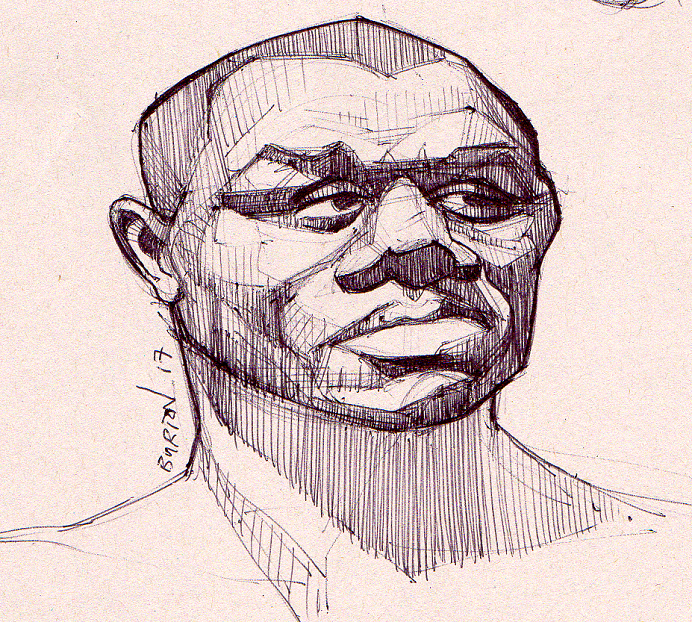
What boxing represented to all these fighters–and to many extra whose names weren’t destined for long-term remembrance–was, initially, a approach to earn a residing. This isn’t stunning contemplating the restricted choices out there for black males looking for a approach to survive in post-Civil Conflict America. Racism, a lot of it institutionalized, prevented blacks from climbing up the social ladder, in the event that they had been allowed to position their fingers on it in any respect.
However prizefighting discovered itself in scorching demand. This created a possibility for younger black males to show their fistic price inside a hoop and be rewarded for it. It’s a bittersweet irony that the matches most in demand on the time–those that garnered the most important purses for each white and black fighters–had been interracial fights. It is because the richest audiences for prizefights had been composed of white males, and their high precedence when attending a boxing card was to see a white fighter defeat a black one, thus confirming their conviction within the supposed superiority of their race.
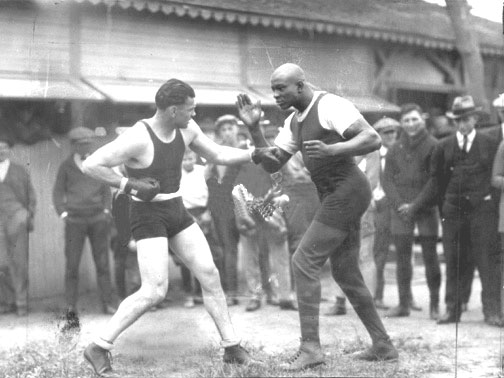
That is the rationale battle promoters of the time typically preceded a important occasion during which it was anticipated a white fighter may lose to a black boxer with the degrading spectacle of a “battle royale,” a weird free-for-all the place a number of blindfolded black fighters had been set free within the ring to pummel one another till just one was left standing. If the concept of such a spectacle disgusts us as we speak, we will take solace from what transpired after it was over, the second when the 2 important occasion fighters entered the ring and a black fighter achieved one thing resembling full equality, having eventually been granted the chance to face face-to-face with a white fighter earlier than, as a rule, and as Moore paperwork repeatedly, securing victory.
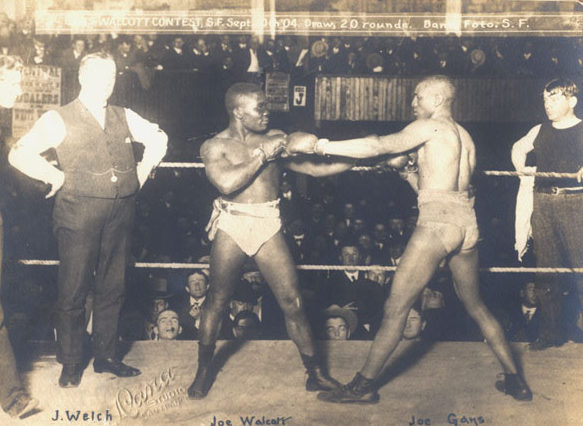
However one other aspect of the inherent unfairness of this enterprise was the truth that to safe their likelihood on the largest paydays granted for dealing with white fighters, black boxers needed to first hone their abilities in opposition to all the opposite high black opponents who had been additionally ready in line. “Coloured championships” had been thus created with the particular objective of discovering the most effective black fighters on the completely different weight courses. Thus, the general public might extra clearly establish who the white “world” champion was avoiding after which decide which black fighter most deserved a shot on the champion, in case the latter ever determined to grant such a possibility.
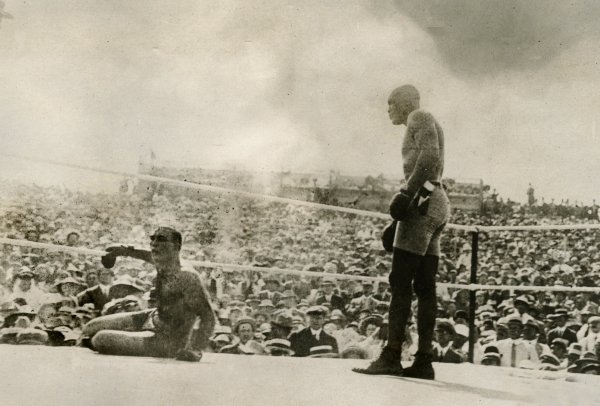
This resulted in high black pugilists of the time battling one another many times, sharpening their abilities and punishing their our bodies for peanuts, at all times conscious {that a} dangerous outing or a tricky loss might ship all of them the way in which to the again of the queue. In the meantime, the white champion disposed of lesser competitors for simple paychecks, whereas on the similar time asserting white dominance over blacks by denying them the chance to compete for the supposedly professional world championship.
White belt-holders could have been reluctant to commerce blows with black challengers, however that didn’t deter black fighters from competing and, certainly, the sheer variety of alternatives out there to them to battle was outstanding, suggesting that, regardless of all the things, their skills had been in excessive demand. Boxing followers of the time appeared to have a type of love-hate relationship with black fighters; on the one hand they admired their abilities, combating acumen and even their chiseled physiques, however alternatively they may not bear to see them defeat white boxers, turning on them the second they did.
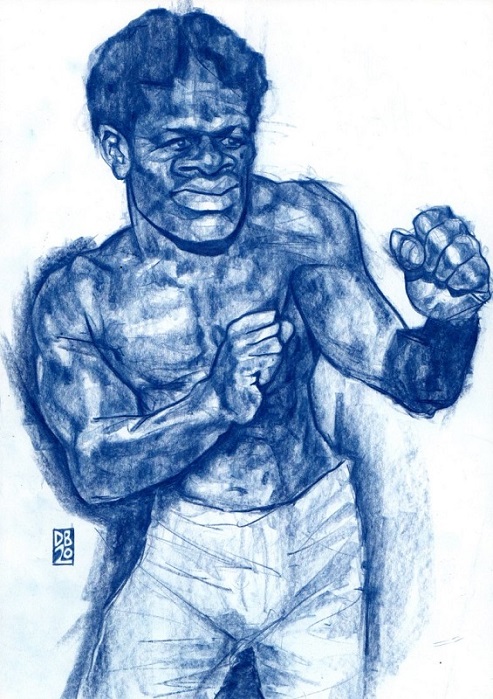
In the meantime, the white media typically alternated between portraying black fighters as submissive, carefree Sambo caricatures, or denying them their humanity because of their triumphs, assigning their ring superiority to savage, animalistic traits. It’s some extent that Moore paperwork extensively, by quoting loads of dailies from the instances and by reprinting a few of the appalling newspaper cartoons that had been normal fare on the time.
After which there have been the conflicts between black fighters and the completely different factions inside black society. Whereas black elites didn’t care a lot for prizefighting in precept, they couldn’t assist however latch on to the success of triumphant black prizefighters and try and make a task mannequin out of such figures, solely to drop them the moment their conduct exterior the ring didn’t conform to their requirements.

As for the decrease black courses, they anticipated their ring idols to reside the lifetime of an excellent fellow, spending cash left and proper, playing, partying it up, and signaling their success by means of flashy garments and possessions. Tellingly, the dichotomy between turning into a role-model or residing it up within the quick lane has adopted black athletes properly into the twenty first century and Moore explores this idea in nice depth in his e-book.
However maybe the chief power of I Struggle for a Dwelling, a minimum of for battle followers, lies in the way in which it fills within the holes of the boxing historical past most of us are acquainted with from that period, which normally revolves across the lineage of the crowns. As Moore makes abundantly clear, the black-dominated periphery of the title image is a wealthy supply of compelling materials, each for historians and for individuals who simply need to hear an excellent boxing story.
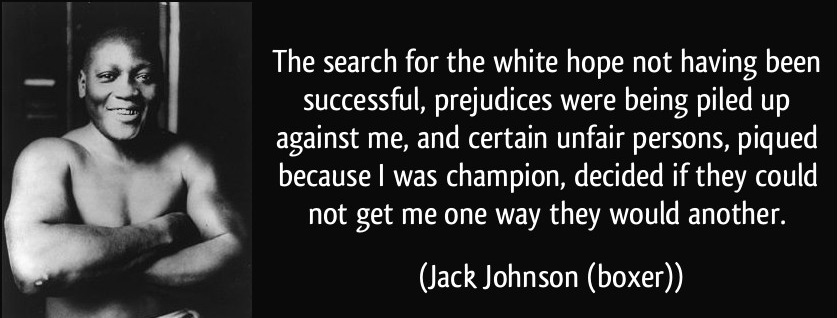
Whereas there are many detailed vignettes on this e-book on the most well-liked fighters of the time, every documenting their upbringings, personalities, and the trajectory of their careers, to not point out how they made and spent their fortunes throughout and after their heyday, there’s additionally loads of good, old school ring reportage. On this respect, the astonishing story of how Morris Grant–then coloured champion of New York–and Connecticut’s Charles Hadley, aka “The Professor,”–met in 1882 within the final of their twelve encounters to find out who was the coloured heavyweight champion, stands out particularly:
“When the bell sounded… Hadley rushed at his man, hitting left and proper, and driving Grant all around the stage, pounding and thumping him with no intervals till Grant fell all in a heap on the ground. Within the second spherical, Hadley continued his livid combating and knocked Grant out of the ring. [Then] Hadley dropped him three extra instances. Grant’s nook man, Charles Cooley, tried to cease the battle by sitting Grant on his stool, however the crowd needed extra motion and yelled at Hadley to “give it to him.” The Professor obliged. However earlier than Hadley might end Grant, Grant fell off his stool to keep away from the knockout. Referee Harry Hill declared Hadley the winner… After the battle Cooley stood within the middle of the ring and yelled “I can lick any 180 pound nigger on the earth for $500.” The Professor coolly walked over to his adversary and decked him. Cooley obtained up, and Hadley knocked him down once more. In the course of the ruckus any individual handed Cooley a revolver; thankfully, earlier than Cooley might shoot, the police grabbed him and threw him out …”

It’s sufficient to make any present-day boxing controversy, even Mike Tyson’s ear-biting episode, seem like one thing from Sesame Road, however it additionally serves as a reminder of prizefighting’s troubled nature and historical past. Furthermore, it illustrates the lengths black fighters had been prepared to go, and the dangers they had been prepared to take, to make a reputation for themselves in such a turbulent and dangerous enterprise. In a time when securing massive fights, ie. interracial fights, was a perennial downside, the best asset of black fighters turned their reputation.
The actual fact so lots of them toiled beneath abhorrent racism and unfair remedy from their fellow sportsmen, from the media, from society, and from their very own governments, attests to their unbelievable fortitude. The actual fact so lots of them engraved their names in golden letters within the pages of boxing’s historical past books, attests to their plain excellence. I Struggle for a Dwelling is a becoming remembrance of all of them, and–in a time when hatred and bigotry appear to be gaining floor in opposition to decency in so many elements of the world–a well timed reminder of the darkness and ugliness into which such concepts and habits can lead us.
–Rafael Garcia
[ad_2]
Source link

